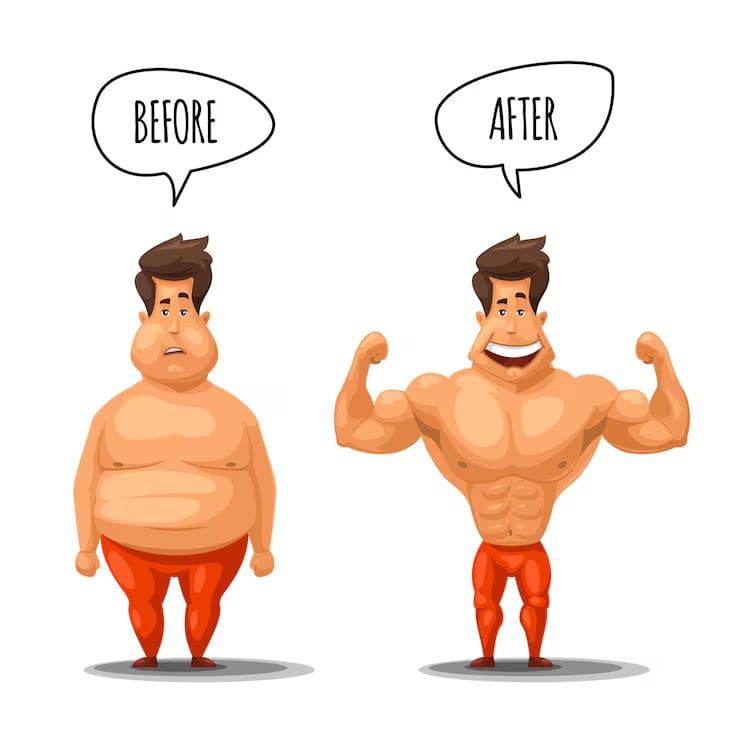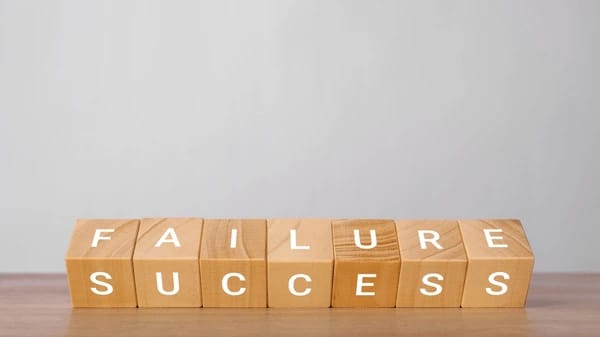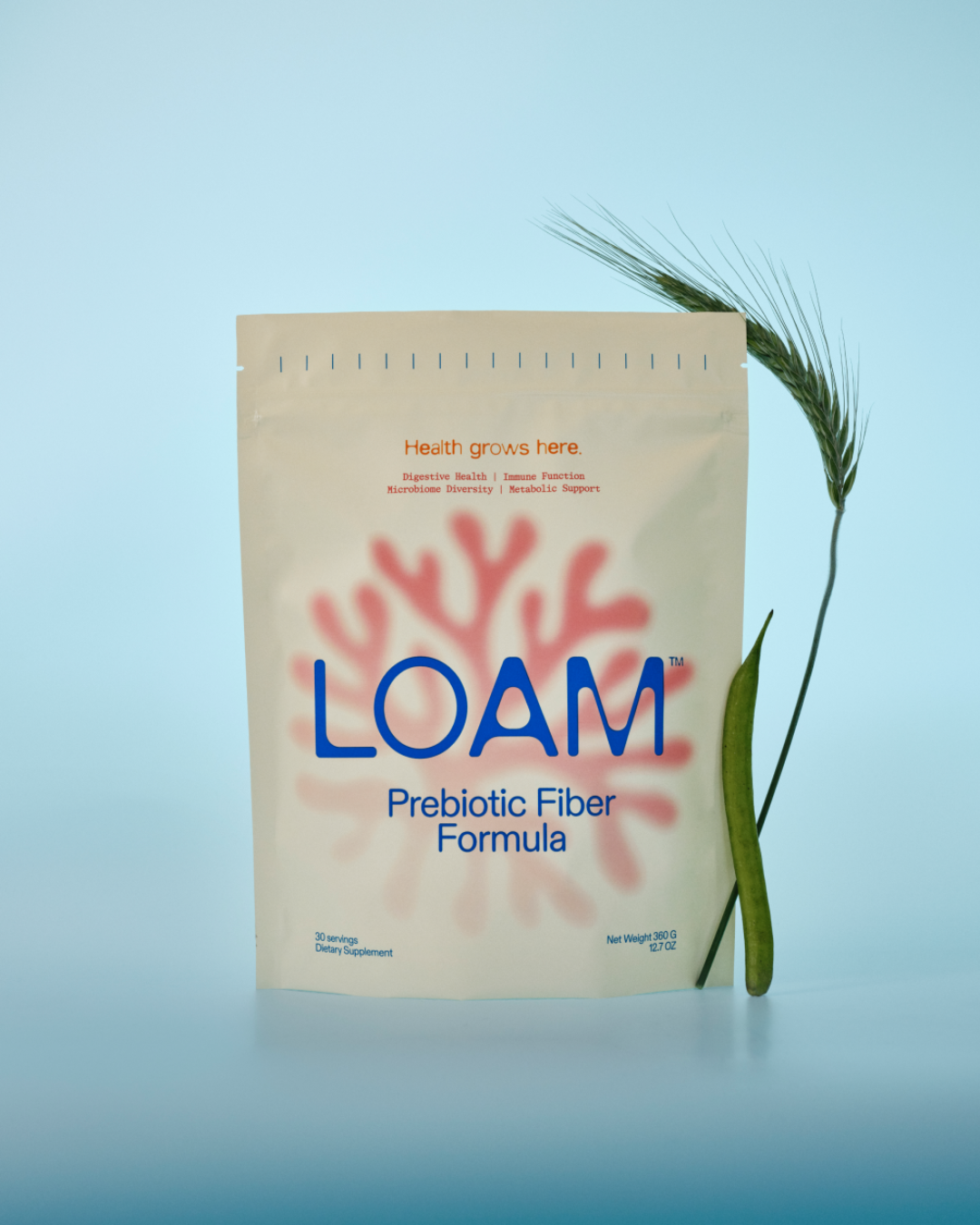- Dr Karan's Weekly Dose
- Posts
- 🍔Dieting Hack, The Best Fiber Supplement & How I Failed
🍔Dieting Hack, The Best Fiber Supplement & How I Failed
The Weekly Dose - Episode 165
Welcome to the positive side of the internet.
Every week, I help you make sense of the complex world of wellness, simplifying the latest research, and providing quick tips designed to help you stay healthier. If you were forwarded this message, you can get the free weekly email here.
Today’s Dose:
Muscle & Dieting
The best fiber supplement?!
Weekly wisdom
Btw…LOAM prebiotic fiber blend is now out here:
P.S don’t forget to use code WAITLIST25 on subscription orders for a cheeky discount!
Now…on with the show!
The “Diet Break” That Helps Preserve Muscle!

We’ve all been there… a weekend binge can undo a week’s worth of discipline faster than you can say “bottomless brunch.”
Five clean days, two days of chaos.
But here’s a reframe that might surprise you: taking structured breaks from your diet could actually help preserve muscle and make fat loss easier.
Sounds like fitness heresy, right?
What the evidence suggests
In an 8-week randomised controlled trial, two groups followed calorie-restricted diets while lifting weights four times per week.
Group A ate in a 25% calorie deficit every day (your standard “dieting 7 days a week” approach).
Group B ate in a 35% deficit for 5 days, then increased to maintenance calories for 2 days… essentially, a planned weekend “refeed.”
Both groups consumed high protein (≥2.3 g/kg) to protect muscle.
The results
Both groups lost a similar amount of fat.
But the “refeed” group lost almost no muscle, while the 7-day dieters lost over 2 pounds of lean tissue.
The refeed group also maintained a steadier metabolic rate; meaning their bodies didn’t slow down as much in response to dieting.
So the weekend group ate more, kept more muscle, and still lost the same amount of fat.
Why this worked
When you diet continuously, your body reads the drop in calories as a signal of scarcity.
Hormones like leptin and thyroid hormones decline, slowing metabolism and increasing fatigue.
Periodic calorie “refeeds”; especially with carbohydrates… seem to counteract this stress signal.
The temporary increase in energy availability and glycogen refuels your muscles, boosts training performance, and can even reduce cortisol (the stress hormone linked to muscle breakdown).
In other words, it gives your body a reason not to panic.
This isn’t a free pass to turn the weekend into an eating festival.
The participants didn’t binge… they simply ate at maintenance, meaning just enough to fuel recovery without overshooting.
Maintenance means you’re still in control.
If you’re inhaling burgers, fries, and cheesecake “because science,” you’re not doing refeeds but overcompensating.
Think of it as:
Larger portions of the same foods you already eat, or
Including more carb-dense, whole-food options… rice, oats, potatoes, fruit to replenish glycogen and training energy.
Your plan
If you’re following a structured fat-loss plan:
1. Stay consistent during the week with a moderate calorie deficit.
2. Plan two higher-calorie days (preferably around training) to hit maintenance levels.
3. Keep protein high: at least 1.2-1.6 g/kg body weight.
4. Focus on whole, minimally processed carbs rather than “cheat” foods.
This pattern, sometimes called “intermittent refeeding”, helps preserve muscle, protect metabolism, and maintain sanity.
Whether you’re dieting or just trying to eat better, remember this:
The body doesn’t thrive under constant restriction.
It thrives under balance — cycles of stress and recovery, work and rest, contraction and release.
Your gut, your metabolism, even your mind all follow that rhythm.
Sometimes the smartest thing you can do for progress is to pause — intentionally.
Refs: PMID: 33467235
Quick interlude: If you think The Weekly Dose is cool 😎, share this newsletter on socials, mention it in your newsletter, and/or hit forward to your health-curious friends, family, and that one fiendish coworker who loves learning about health stuff.
Reminder: This newsletter is free, always will be and I send it out every Sunday to give you in-depth insights into the health topics!
I Couldn’t Find The Fiber Supplement I Was Looking For….
So I Built It!
You can grab it here:
(don’t forget to use code WAITLIST25 on subscription orders for a cheeky discount)
When I first went looking for a fiber supplement that actually ticked all the right boxes; science-backed, high dose, easy to use, gentle on the gut… I realised it didn’t exist.
So I made it.
LOAM Science started as an experiment in fixing every frustration I had with the fiber category. Here’s what I learned along the way:
Dose that actually does something
Most fiber powders give you 5–6 g of fiber per serving; enough for the label, but not enough to move the needle.
Every serving of LOAM delivers 10 g of prebiotic fiber: a clinically effective dose shown in multiple studies to support bowel regularity, microbial diversity, and satiety.
Because “trace fiber” isn’t health-changing fiber.
Diversity over monotony
Many supplements rely on a single fiber (psyllium, inulin etc). The problem is that each fiber only feeds a fraction of your microbiome.
LOAM combines six complementary prebiotic fibers that work in synergy… fast, medium, and slow fermenters… to feed different species, across different parts of the colon.
Why six? Too few, and you lose diversity.
Too many, and you dilute each ingredient’s dose.
After two years of R&D, I found the sweet spot: four to six distinct fibers give the best balance between range, potency, and user comfort.
Built for every gut… even sensitive ones
Most fiber products forget people with sensitive guts exist.
LOAM was formulated to be Low-FODMAP-friendly: gentle and with ingredients clinically tested and dosed for tolerance.
It’s fiber that works with your gut, not against it.
Science first, always
Every ingredient in LOAM has clinical evidence from multiple randomized controlled trials supporting its effects; from short-chain-fatty-acid production to improved bowel regularity and metabolic health.
It’s evidence-based formulation built by a doctor that has seen thousands of GI patients and microbiome scientists.
You can dive deeper into the data on the Science page →
Unmatched user experience
Most fiber supplements taste like drinking dust. LOAM doesn’t.
Completely clear when mixed
No grit, no odour, no flavour
Dissolves with ultra high solubility into water, smoothies, coffee, or food
Think of it as invisible fiber… stealth health that integrates seamlessly into your day.
No additives
What’s in LOAM? Fibers.
That’s it.
No artificial flavours, no sweeteners, no colours, no preservatives, no fillers.
Most fiber supplements add bulking agents, artificial flavours to make it “taste good” or other additives to help the powder dissolve better or pour more easily. LOAM has just pure, functional prebiotic fibers… blended precisely, not padded out and still performs.
Because every gram should do something useful for your health.
The complete package
Some brands get one or two things right… rarely three… dose, taste, or diversity.
LOAM was designed to hit all six pillars: potency, diversity, sensitivity, evidence, additive-free and experience.
Yes, I’m biased… but objectively, the quality and composition speaks for itself.
The bigger mission
This launch has been a wild ride… sleepless nights and thousands of DMs from people sharing their gut stories. Your support has been the fuel keeping me going.
LOAM is made in the USA under cGMP standards, which means pharmaceutical-grade quality and in case you missed this video, I explain why we chose the USA to manufacture versus elsewhere.
Whilst we get regional fulfilment and distribution outside the USA sorted out asap here’s the deal:
🇺🇸 US customers: free shipping on all subscriptions!
🌍 Outside the US (UK, some EU countries, Australia): we’ve added a quarterly bundle option to offer free shipping (you might still be subject to customs/tax)…plus on top of that you can also use the code WAITLIST25 for an extra discount!
As a startup, we’re not perfect… but we’re human, and we’ll do everything possible to make sure your experience reflects the care that went into this product.
Working hard on getting this to more countries around the world too (every country has weird rules and regulations around importing products so bear with me!)
If you’ve been waiting for a prebiotic that’s clear, gentle, and clinically serious, this is it.
Grab LOAM here:
… and use WAITLIST25 for 25 % off subscriptions… plus early access to freebies and future launches.
Thank you for being part of this journey. Truly.
P.S for any queries or issues please email [email protected] and we will sort you out!
Things I Wish I Knew Before My 30s

If you’d told my younger self that one day I’d be preaching about the beauty of failure, I’d have laughed and gone back to trying to control every possible outcome.
For most of my twenties, I treated life like a medical exam (because I had a shit tonne of those!): study hard, prepare meticulously, eliminate error. I believed mistakes were avoidable… proof that you hadn’t prepared enough.
But the older I get, the more I realise that no matter how much you prepare, life will still hand you wrong notes. You don’t get the job. The plan collapses. The relationship ends.
And that’s not the failure.
The failure is believing the story ends there.
The music of mistakes
A friend once told me that great jazz musicians never avoid mistakes… they absorb them.
When a wrong note slips out, they turn it into part of the melody.
That’s life. You can’t always control the tune, but you can choose how to respond when the rhythm changes.
For years, I thought my identity was defined by the mistake itself… what I got wrong, what I missed, what I lost.
Now I see it differently: you’re not defined by your misstep, but by your next move.
The neuroscience of resilience
Here’s what’s fascinating: your brain is wired to learn through error.
When you make a mistake, a region called the anterior cingulate cortex lights up. It’s your internal alarm system, flagging the mismatch between what you expected and what actually happened.
That signal, called the error-related negativity, is not a punishment but neuroplasticity.
Your brain is changing in response!
Psychologists call this “error-based learning.” Each misfire rewires neural pathways, strengthening the circuits that help you adapt next time.
So when you avoid mistakes… you’re stunting your growth.
Every failure is a microscopic rep in the gym of life. The pain is the cost of adaptation
The cumulative nature of errors
When I look back, every setback I once cursed became a breadcrumb leading somewhere better.
My doubts about not following the "traditional path” pushed me towards medicine.
Slow disillusionment with medicine pulled me into science communication.
The changed perspective of that shift sparked LOAM Science… a project I never could’ve imagined in my twenties.
Life isn’t a straight path; it’s a series of wrong turns that, viewed from altitude, reveal the correct direction.
Mistakes aren’t detours… they are the journey.
As someone who has made more errors than I care to remember (still wondering if I truly learned anything from some but hoping I did)... I can say this:
If you never fail, you’re probably not stretching far enough.
If you never feel uncomfortable, you’re probably not learning fast enough.
And if you never look a little foolish, you’re probably playing a game that’s already beneath your ability.
Fall, adapt, iterate. That’s how neural networks (and humans) grow stronger.
And life, like any good experiment, rewards those willing to run more trials.
👋 Who are you again? I’m Karan Rajan - a doctor and curious explorer of all things health and wellness. I host the Dr Karan Explores Podcast and have written two books "This Book May Save Your Life" and "This Is Vital Information" (you can pre-order it now!) and have just founded a microbiome company, LOAM Science to create the best fiber product in the world!
Every Sunday, I share 3 interesting things about health, life and science to make your life easier, healthier and happier. (Disclaimer: I’m more your friend with health benefits. None of this is medical advice.)
And oh, you if also feel strongly about some health things or just want to say hi? Hit reply... I’d love to hear it and hear from you! (yes I read every reply!!!)
Oh and before you wiggle away until next Sunday… here’s the subscribe link to my newsletter if you fancied sharing it with a friend, family member or your arch nemesis!



